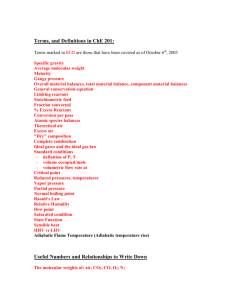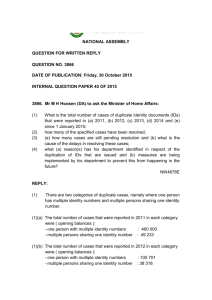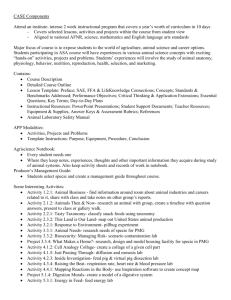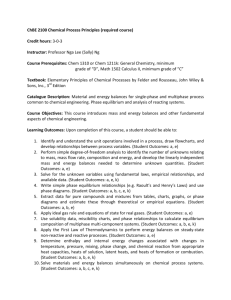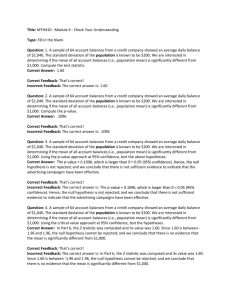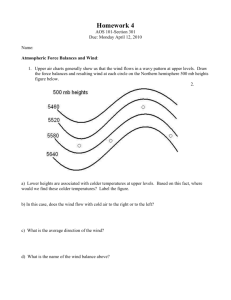4.7 Balances on Reactive Processes
advertisement
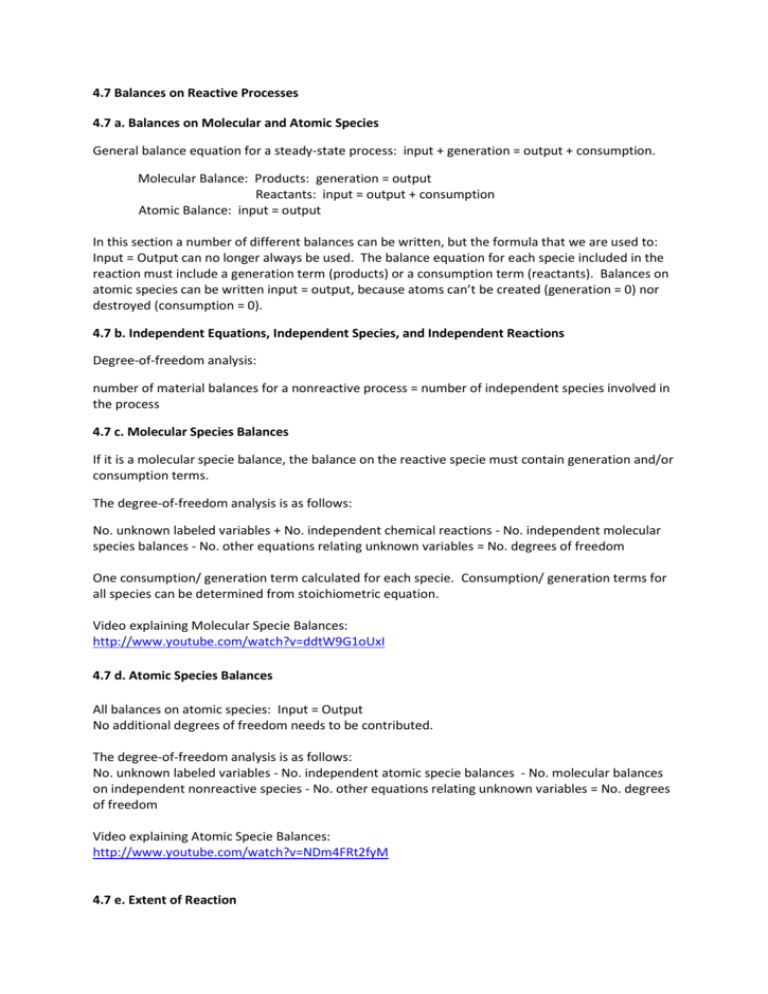
4.7 Balances on Reactive Processes 4.7 a. Balances on Molecular and Atomic Species General balance equation for a steady-state process: input + generation = output + consumption. Molecular Balance: Products: generation = output Reactants: input = output + consumption Atomic Balance: input = output In this section a number of different balances can be written, but the formula that we are used to: Input = Output can no longer always be used. The balance equation for each specie included in the reaction must include a generation term (products) or a consumption term (reactants). Balances on atomic species can be written input = output, because atoms can’t be created (generation = 0) nor destroyed (consumption = 0). 4.7 b. Independent Equations, Independent Species, and Independent Reactions Degree-of-freedom analysis: number of material balances for a nonreactive process = number of independent species involved in the process 4.7 c. Molecular Species Balances If it is a molecular specie balance, the balance on the reactive specie must contain generation and/or consumption terms. The degree-of-freedom analysis is as follows: No. unknown labeled variables + No. independent chemical reactions - No. independent molecular species balances - No. other equations relating unknown variables = No. degrees of freedom One consumption/ generation term calculated for each specie. Consumption/ generation terms for all species can be determined from stoichiometric equation. Video explaining Molecular Specie Balances: http://www.youtube.com/watch?v=ddtW9G1oUxI 4.7 d. Atomic Species Balances All balances on atomic species: Input = Output No additional degrees of freedom needs to be contributed. The degree-of-freedom analysis is as follows: No. unknown labeled variables - No. independent atomic specie balances - No. molecular balances on independent nonreactive species - No. other equations relating unknown variables = No. degrees of freedom Video explaining Atomic Specie Balances: http://www.youtube.com/watch?v=NDm4FRt2fyM 4.7 e. Extent of Reaction Third way to determine unknown molar flow rates for a reactive process: Expressions for each product specie flow rate in terms of extents of reaction. Substitute known feed and product flow rates, and solve for the extents of reaction and the remaining reactive specie flow rates. Degree-of-freedom analysis: No. unknown labeled variables + No. independent reactions (one extent of reaction for each) - No. independent reactive species (one equation for each species in terms of extends of reaction) - No. independent nonreactive species (one balance equation for each) - No. other equations relating unknown variables = No. degrees of freedom Video explaining Extent of Reaction: http://www.youtube.com/watch?v=YusSU0jlOUk 4.7 f. Product Separation and Recycle Overall Conversion = – Single- Pass Conversion = 4.7 g. Purging Some processes involve recycling. When a material remains in a recycle stream the substance would continuously enter the process and will therefore steadily accumulate. A purge stream must withdraw a portion of the recycle stream to prevent a buildup. Videos explaining Purge streams: http://www.youtube.com/watch?v=47tPvx3lOKc (Part 1) http://www.youtube.com/watch?v=gOuOxozb4pE (Part 2) Summary: http://www.youtube.com/watch?v=jyso8NSytWw http://www.youtube.com/watch?v=MSzTIRAv5io http://www.youtube.com/watch?v=tQyrSvll_nc
